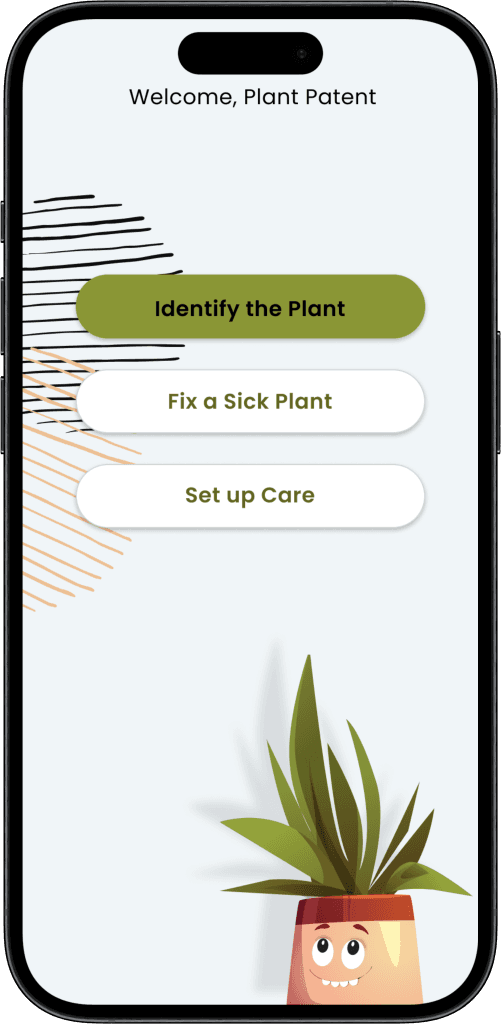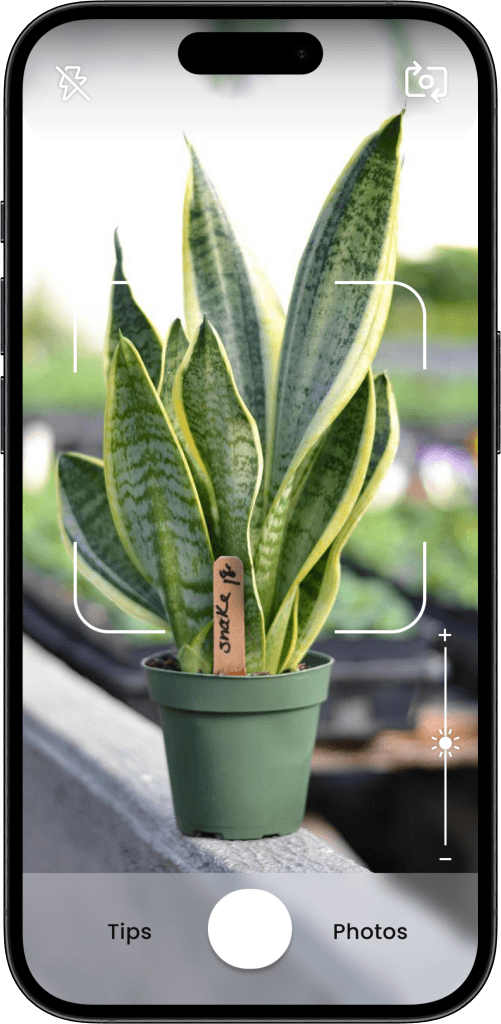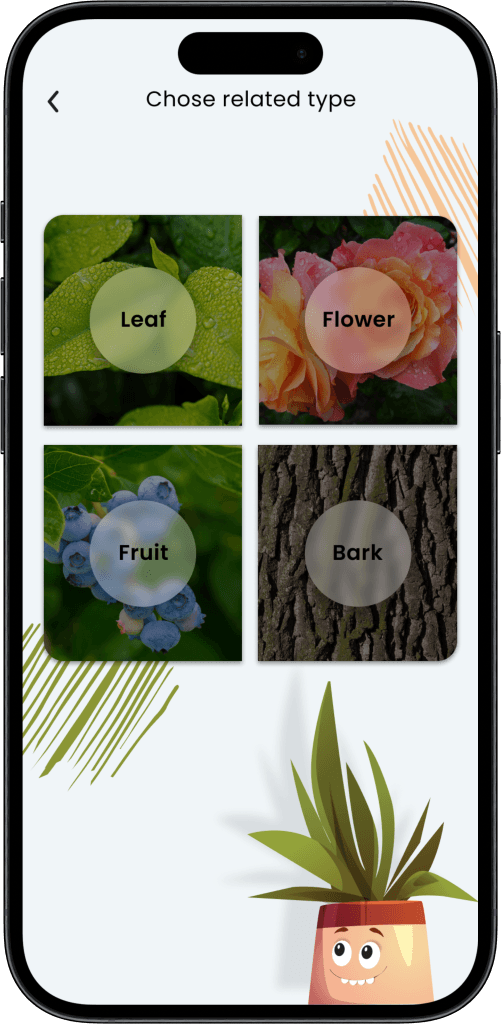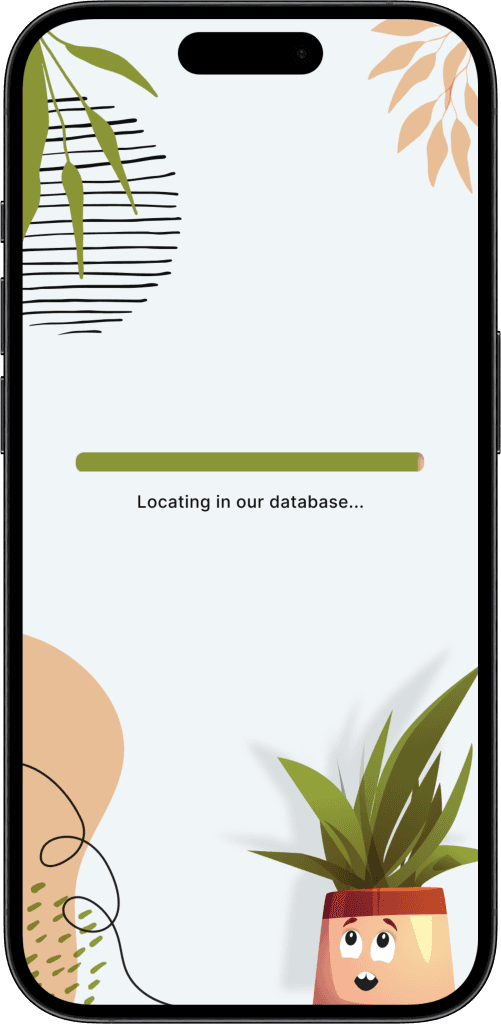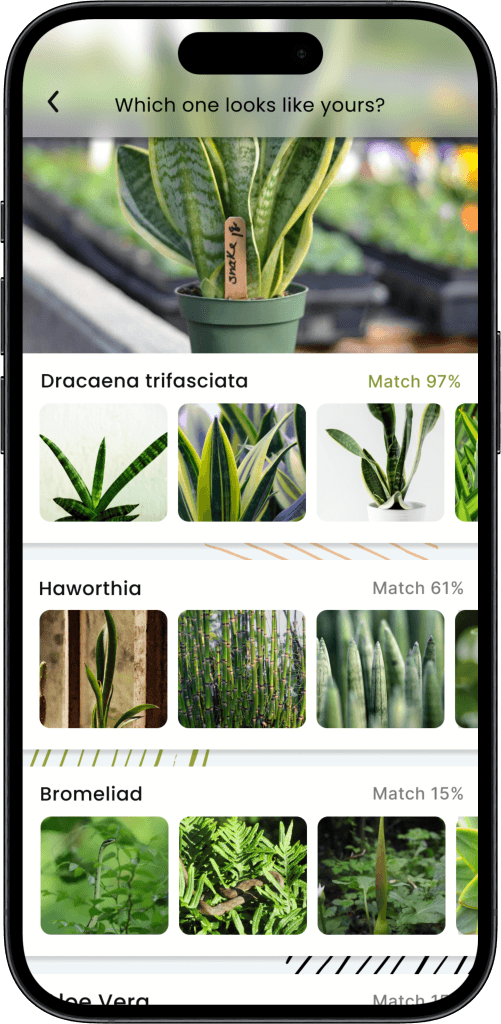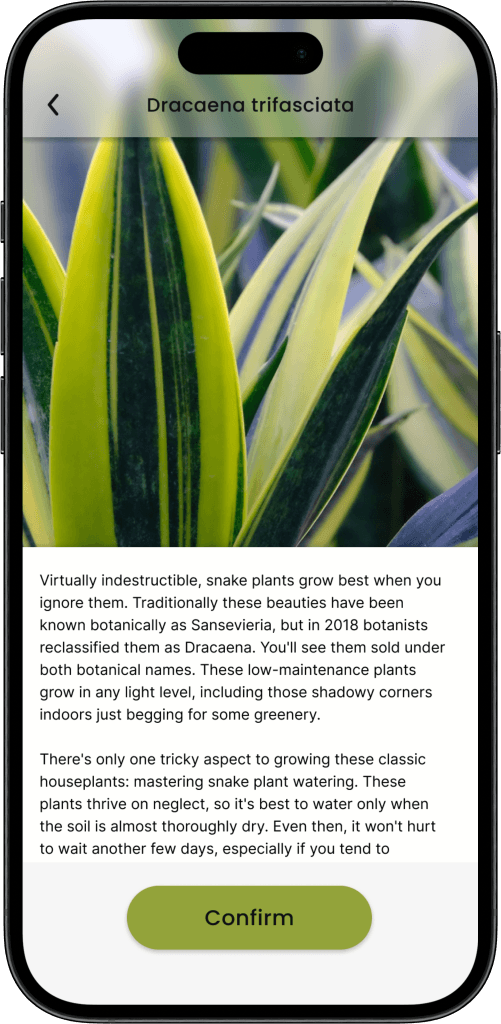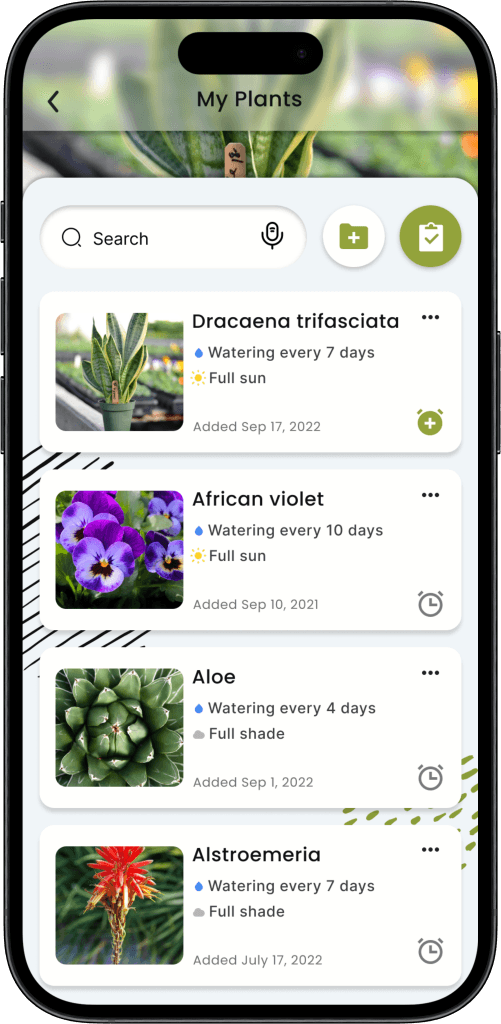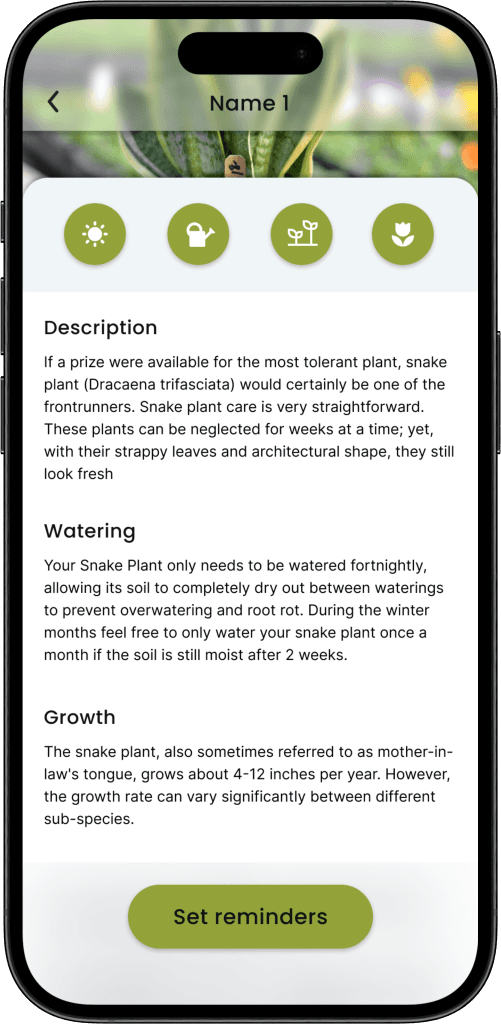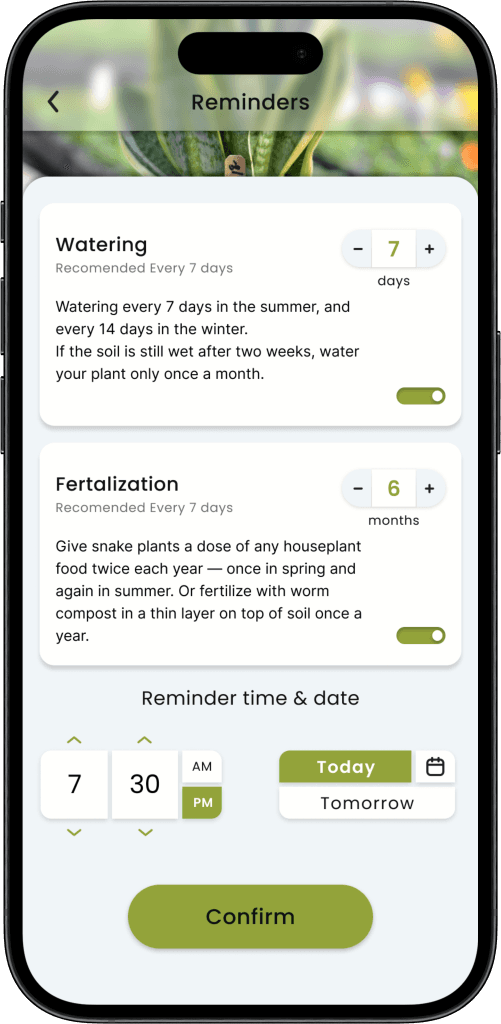back to top
back to top
back to top
back to top
PlantFix
A Mobile Plant Care Application Addresses Millennials' Issues with Plant Care and Competitors' Shortcomings
Executive Summary
Executive Summary
Case Study
Problem Statement
1. Research revealed that plant identification apps Millennials rely on often provide inaccurate insights, making plant care challenging.
2. User interviews and psychological studies showed that Millennials struggle with maintaining consistency in proper care routines.
Problem Statement
1. Research revealed that plant identification apps Millennials rely on often provide inaccurate insights, making plant care challenging.
2. User interviews and psychological studies showed that Millennials struggle with maintaining consistency in proper care routines.
Problem Statement
1. Research revealed that plant identification apps Millennials rely on often provide inaccurate insights, making plant care challenging.
2. User interviews and psychological studies showed that Millennials struggle with maintaining consistency in proper care routines.
Solutions
1. Enhance accuracy with frequent database updates, machine learning from user feedback, and detailed questions about the plant's appearance.
2. Inspired by Duolingo: introduce a mascot with animations, gamified watering and repotting reminders, and motivational prompts.
Solutions
1. Enhance accuracy with frequent database updates, machine learning from user feedback, and detailed questions about the plant's appearance.
2. Inspired by Duolingo: introduce a mascot with animations, gamified watering and repotting reminders, and motivational prompts.
Solutions
1. Enhance accuracy with frequent database updates, machine learning from user feedback, and detailed questions about the plant's appearance.
2. Inspired by Duolingo: introduce a mascot with animations, gamified watering and repotting reminders, and motivational prompts.
Research Methods
User Interviews (11)
Competitive Research (4 Applications)
Facebook Qualitative Research (58 People)
User Persona.
Research Methods
User Interviews (11)
Competitive Research (4 Applications)
Facebook Qualitative Research (58 People)
User Persona.
Research Methods
User Interviews (11)
Competitive Research (4 Applications)
Facebook Qualitative Research (58 People)
User Persona.
HMW Statement
1. How might we improve plant identification accuracy through better data and user feedback?
2. How might we gamify plant care to make it enjoyable rather than a chore?
HMW Statement
1. How might we improve plant identification accuracy through better data and user feedback?
2. How might we gamify plant care to make it enjoyable rather than a chore?
HMW Statement
1. How might we improve plant identification accuracy through better data and user feedback?
2. How might we gamify plant care to make it enjoyable rather than a chore?
Case Study
Case Study
Research > User Interviews (11)
Research > User Interviews (11)
Interviews' Setup
Participants: I selected 11 individuals who enjoy owning plants but struggle with plant care, ensuring diversity in age, education, and location for a well-rounded perspective.
Questions: Open-ended questions encouraged participants to share experiences freely, complemented by observations of their plant care routines and thought processes.
Location: Interviews were conducted in participants' homes, creating a comfortable environment that fostered connection and offered insights into how the app would be used in real-life settings.
Interviews' Setup
Participants: I selected 11 individuals who enjoy owning plants but struggle with plant care, ensuring diversity in age, education, and location for a well-rounded perspective.
Questions: Open-ended questions encouraged participants to share experiences freely, complemented by observations of their plant care routines and thought processes.
Location: Interviews were conducted in participants' homes, creating a comfortable environment that fostered connection and offered insights into how the app would be used in real-life settings.
Interviews' Setup
Participants: I selected 11 individuals who enjoy owning plants but struggle with plant care, ensuring diversity in age, education, and location for a well-rounded perspective.
Questions: Open-ended questions encouraged participants to share experiences freely, complemented by observations of their plant care routines and thought processes.
Location: Interviews were conducted in participants' homes, creating a comfortable environment that fostered connection and offered insights into how the app would be used in real-life settings.
Infographic of Interview Participants' demographic
Infographic of Interview Participants' demographic








Insights
After conducting a week of interviews, each lasting 40-60 minutes, I identified five common pain points among participants. While many issues were anticipated, some unexpected challenges emerged, such as unfamiliarity with the local climate. Interviewees revealed that plant care instructions, often found on small tags, lack clarity. For example, advice to provide 4-6 hours of indirect sunlight is difficult to interpret without knowing the specifics of their local climate or the sunlight conditions of particular windows.
Insights
After conducting a week of interviews, each lasting 40-60 minutes, I identified five common pain points among participants. While many issues were anticipated, some unexpected challenges emerged, such as unfamiliarity with the local climate. Interviewees revealed that plant care instructions, often found on small tags, lack clarity. For example, advice to provide 4-6 hours of indirect sunlight is difficult to interpret without knowing the specifics of their local climate or the sunlight conditions of particular windows.
Insights
After conducting a week of interviews, each lasting 40-60 minutes, I identified five common pain points among participants. While many issues were anticipated, some unexpected challenges emerged, such as unfamiliarity with the local climate. Interviewees revealed that plant care instructions, often found on small tags, lack clarity. For example, advice to provide 4-6 hours of indirect sunlight is difficult to interpret without knowing the specifics of their local climate or the sunlight conditions of particular windows.
Research > User Profile



Millennials grew up with technology and heavily rely on technology for success and answers. If the technology fails they hesitate to ask for advice from others.



When their expectations are not attained quickly, the Millennial Generation will search for new opportunities and new projects.



Millennials are starting their families a lot later than other generations. The term "Plant Patent" was started by this generation.



Due to putting off starting a family and loving independent work, Millennials built a bond with their plants and care about succeeding
Research > User Persona



Personal Information
Ana, 33
Married
Chicago, IL
Personal Information
Ana, 33
Married
Chicago, IL
Personal Information
Struggles with plant care due to unfamiliarity often lead to failure.
Domain Specific
Responsible for taking care of plants
Usually received them as a gift
Domain Specific
Responsible for taking care of plants
Usually received them as a gift
Domain Specific
Challenges due to unfamiliarity with the local climate
Internet Usage
Tech competent
Owns a cell phone
Owns a computer
Internet Usage
Tech competent
Owns a cell phone
Owns a computer
Internet Usage
Give up too quickly
Key Attributes
Works in a restaurant as a General Manager
Works long hours 6 AM - 6 PM
Has a husband, who works night shifts
Key Attributes
Works in a restaurant as a General Manager
Works long hours 6 AM - 6 PM
Has a husband, who works night shifts
Key Attributes
Challenges due to unfamiliarity with the local climate
Ana's Goals
Wants to make her plants thrive
Wants to decorate her house with large plants, grown from the seed
Ana's Goals
Wants to make her plants thrive
Wants to decorate her house with large plants, grown from the seed
Ana's Goals
Give up too quickly
Personal Profile
Ana works 12-hour shifts at a restaurant, with 4 days off. At home alone, she often feels bored. She loves caring for plants, finding joy in nurturing something alive and seeing her efforts pay off. However, despite her brighter new apartment, her plants keep dying unexpectedly, even though she hasn’t changed her care routine. Online research hasn’t provided clear answers, leaving Ana frustrated and in need of guidance.
Personal Profile
Ana works 12-hour shifts at a restaurant, with 4 days off. At home alone, she often feels bored. She loves caring for plants, finding joy in nurturing something alive and seeing her efforts pay off. However, despite her brighter new apartment, her plants keep dying unexpectedly, even though she hasn’t changed her care routine. Online research hasn’t provided clear answers, leaving Ana frustrated and in need of guidance.
Personal Profile
Ana works long 12-hour shifts in the restaurant and she has 4 days off. When Ana is at home for her 4 days off and her husband isn't there, she feels bored.
Ana always had plants, and sometimes they did great, but other times then seem to 'die' for no apparent reason.
Ana doesn't have children and she enjoys taking take of something alive and watch the results of your work. Her new apartment is brighter and seems like her plants should like it, however plants 'die' one after another, even though her care routine wasn't adjusted. She had researched for possible reasons online, but nothing seem to add up. Ana needs help.
Research > Competitor Research
Features / Competitors
Indentify the Plant
Community
Articles
Schedules and Suggestions
Care Suggestions
PlantSnap
Vera
LeafSnap
PlantNet
Features / Competitors
Indentify the Plant
Community
Articles
Schedules and Suggestions
Care Suggestions
PlantSnap
Vera
LeafSnap
PlantNet
Feature comparison chart from top - 4 competitors
Feature comparison chart from top - 4 competitors
Feature comparison chart from top - 4 competitors
Features / Competitors
Indentify the Plant
Community
Articles
Schedules and Suggestions
Care Suggestions
PlantSnap
Vera
LeafSnap
PlantNet
Features / Competitors
Indentify the Plant
Community
Articles
Schedules and Suggestions
Care Suggestions
PlantSnap
Vera
LeafSnap
PlantNet
Feature comparison chart from top - 4 competitors
Feature comparison chart from top - 4 competitors
PlantSnap
Contains many bugs
Has low identification accuracy
PlantSnap
Contains many bugs
Has low identification accuracy
PlantSnap
Contains many bugs
Has low identification accuracy
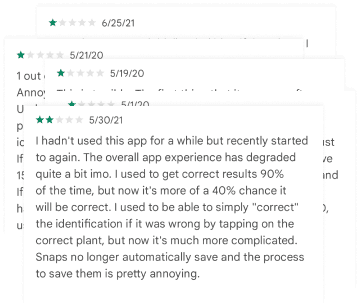


Vera
Limited functionality
Unfixed bugs for a long time
Vera
Limited functionality
Unfixed bugs for a long time
Vera
Limited functionality
Unfixed bugs for a long time
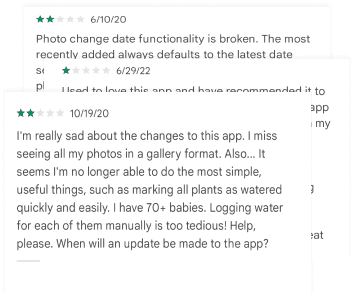


LeafSnap
Excessive amount of ads, even on the Premium plan
Location isn't taken into account
LeafSnap
Excessive amount of ads, even on the Premium plan
Location isn't taken into account
LeafSnap
Excessive amount of ads, even on the Premium plan
Location isn't taken into account



PlantNet
Unintuitive navigation and UI
Brings suspicion by requiring access to phone storage
Frequent bugs
PlantNet
Unintuitive navigation and UI
Brings suspicion by requiring access to phone storage
Frequent bugs
PlantNet
Unintuitive navigation and UI
Brings suspicion by requiring access to phone storage
Frequent bugs
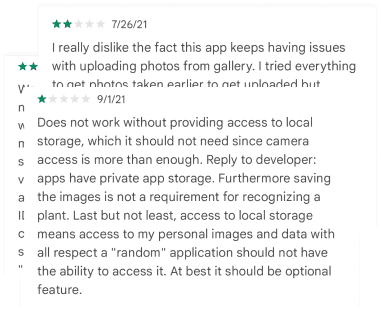


Tested by Me
PlantSnap test results corroborated users' feedback, with the system misidentifying 2 out of 5 plants. In contrast, LeafSnap achieved 100% accuracy, and PlantNet attained 80% accuracy. To understand their superior performance, I conducted a deeper analysis of the features and algorithms that contribute to the high accuracy rates of LeafSnap and PlantNet
Tested by Me
PlantSnap test results corroborated users' feedback, with the system misidentifying 2 out of 5 plants. In contrast, LeafSnap achieved 100% accuracy, and PlantNet attained 80% accuracy. To understand their superior performance, I conducted a deeper analysis of the features and algorithms that contribute to the high accuracy rates of LeafSnap and PlantNet
Tested by Me
PlantSnap test results corroborated users' feedback, with the system misidentifying 2 out of 5 plants. In contrast, LeafSnap achieved 100% accuracy, and PlantNet attained 80% accuracy. To understand their superior performance, I conducted a deeper analysis of the features and algorithms that contribute to the high accuracy rates of LeafSnap and PlantNet
successful apps user flows
successfull apps user flows



'Identify the plant by photo" USER FLOW | LeafSnap



"Identify the plant by photo" USER FLOW | PlantNet
"Identify the plant by photo" USER FLOW | PlantNet
Insights
My finding showed that the user flow of these apps contains additional questions, relying on users to narrow the search result.
1. The 'choose related type' step allowed users to select what kind of image they are uploading; leaf, flower, fruit, or bark.
2. The 'choose a match from users' images' shows a great variety of photos of the same plant type that other users previously uploaded. Since the same plant types can look very different, this approach eliminates mistakenly disregarding identification results due to minor differences in the image.
Insights
My finding showed that the user flow of these apps contains additional questions, relying on users to narrow the search result.
1. The 'choose related type' step allowed users to select what kind of image they are uploading; leaf, flower, fruit, or bark.
2. The 'choose a match from users' images' shows a great variety of photos of the same plant type that other users previously uploaded. Since the same plant types can look very different, this approach eliminates mistakenly disregarding identification results due to minor differences in the image.
Insights
My finding showed that the user flow of these apps contains additional questions, relying on users to narrow the search result.
1. The 'choose related type' step allowed users to select what kind of image they are uploading; leaf, flower, fruit, or bark.
2. The 'choose a match from users' images' shows a great variety of photos of the same plant type that other users previously uploaded. Since the same plant types can look very different, this approach eliminates mistakenly disregarding identification results due to minor differences in the image.
Research > Feature Prioritization
Quantitative Research
I aimed to make my app a one-stop solution for all plant care issues, starting with feature prioritization.
To guide this process, I created a Facebook poll based on features from my ideation session, informed by prior research. Posted in a group with 211,000 members, 58 participants shared their opinions, shaping my feature prioritization decisions.
Quantitative Research
I aimed to make my app a one-stop solution for all plant care issues, starting with feature prioritization.
To guide this process, I created a Facebook poll based on features from my ideation session, informed by prior research. Posted in a group with 211,000 members, 58 participants shared their opinions, shaping my feature prioritization decisions.
Quantitative Research
I aimed to make my app a one-stop solution for all plant care issues, starting with feature prioritization.
To guide this process, I created a Facebook poll based on features from my ideation session, informed by prior research. Posted in a group with 211,000 members, 58 participants shared their opinions, shaping my feature prioritization decisions.
Feature prioritization participant votes
Feature prioritization participant votes
Feature prioritization participant votes


Feature Prioritization
After analyzing the poll results, I have decided to include all the features from the "Most important" section and "Identify by description" and "Match accuracy" features from the "Important section". Likes, comments, and plant articles would be a great addition for the second update, but not crucial for the initial launch, especially while the app is building the user base.
Feature Prioritization
After analyzing the poll results, I have decided to include all the features from the "Most important" section and "Identify by description" and "Match accuracy" features from the "Important section". Likes, comments, and plant articles would be a great addition for the second update, but not crucial for the initial launch, especially while the app is building the user base.
Feature Prioritization
After analyzing the poll results, I have decided to include all the features from the "Most important" section and "Identify by description" and "Match accuracy" features from the "Important section". Likes, comments, and plant articles would be a great addition for the second update, but not crucial for the initial launch, especially while the app is building the user base.
Most Important
Identify a plant by photo
Set watering schedule and reminders
Important
Fix a sick plant
Suggest care routine
Less Important
Show confidence score of a match
Plant articles
Like and comment posts
Ads for plant tools
Not Important
Post a plant you have identified to help others
Find other users nearby
Chat with other users
Design
Design
Design
Solutions
Solution
Outcome
I have concentrated on creating the most commonly used path by users, the "Identify the plant by photo" path, with selecting a care routine and saving reminders. I used the finding from the competitor analysis to increase the accuracy of the identification results. I have decided that creating a mascot for the app to address users' motivation and to stay up to date with the industry trends. The three overlapping circles are the mascot representation.
Outcome
I have concentrated on creating the most commonly used path by users, the "Identify the plant by photo" path, with selecting a care routine and saving reminders. I used the finding from the competitor analysis to increase the accuracy of the identification results. I have decided that creating a mascot for the app to address users' motivation and to stay up to date with the industry trends. The three overlapping circles are the mascot representation.
Outcome
I have concentrated on creating the most commonly used path by users, the "Identify the plant by photo" path, with selecting a care routine and saving reminders. I used the finding from the competitor analysis to increase the accuracy of the identification results. I have decided that creating a mascot for the app to address users' motivation and to stay up to date with the industry trends. The three overlapping circles are the mascot representation.
Planty - the mascot
Planty - the mascot
Planty - the mascot



Medium Fidelity: 'Identify the plant by photo' user flow
Medium Fidelity: 'Identify the plant by photo' user flow
Medium Fidefity: 'Identify the plant by photo' user flow

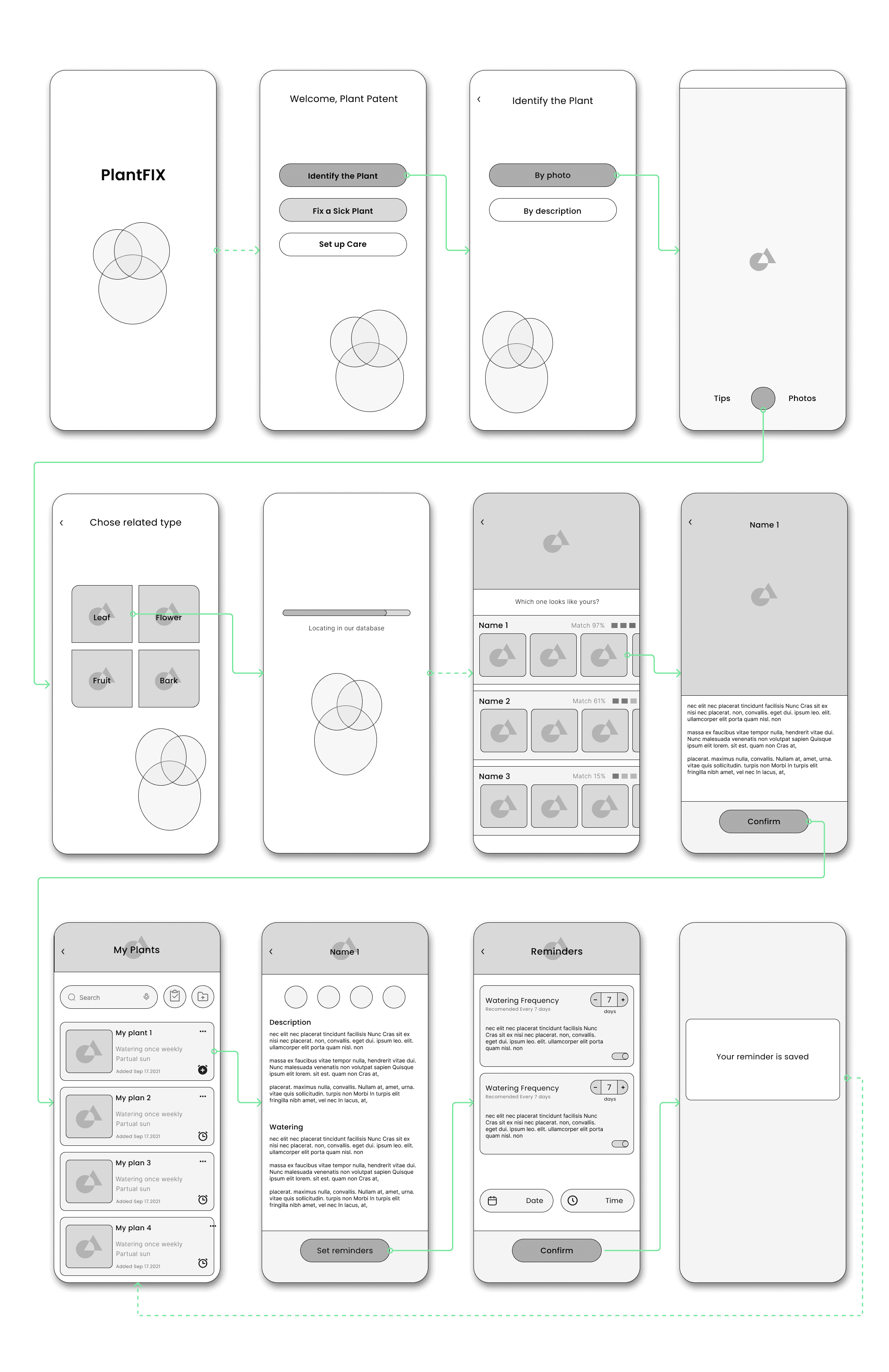

high Fidelity: 'Identify the plant by photo' user flow
high Fidelity: 'Identify the plant by photo' user flow
Medium Fidefity: 'Identify the plant by photo' user flow

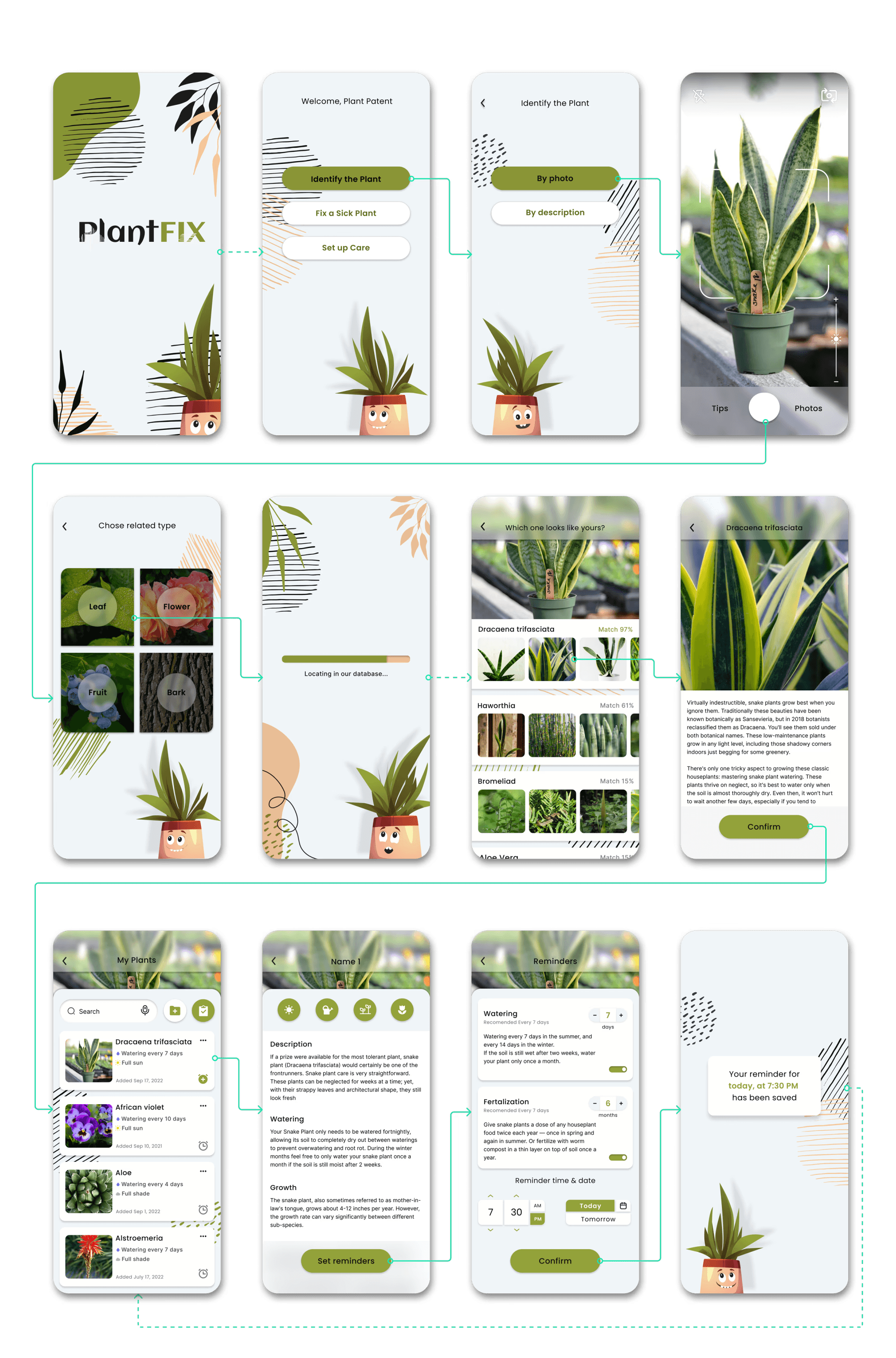

Reflection
Reflection
Reflection
Reflection
I approached this project with a design thinking methodology and went between stages multiple times before being satisfied with the amount of information gathered to provide solution ideas. I redesigned the wireframes and the UI three times, but in the end, I was happy with my result.
I addressed all the main pain points that my research uncovered and used modern trends and target audience profile specifics to do so.
The challenges that I was facing with this project were a lack of resources to research the specific audience even deeper, and further test the product with them.
What I would do differently next time is present prototypes to my interviewees and gather their feedback before moving on to the next stage of the design thinking process.
Reflection
I approached this project with a design thinking methodology and went between stages multiple times before being satisfied with the amount of information gathered to provide solution ideas. I redesigned the wireframes and the UI three times, but in the end, I was happy with my result.
I addressed all the main pain points that my research uncovered and used modern trends and target audience profile specifics to do so.
The challenges that I was facing with this project were a lack of resources to research the specific audience even deeper, and further test the product with them.
What I would do differently next time is present prototypes to my interviewees and gather their feedback before moving on to the next stage of the design thinking process.
Reflection
I approached this project with a design thinking methodology and went between stages multiple times before being satisfied with the amount of information gathered to provide solution ideas. I redesigned the wireframes and the UI three times, but in the end, I was happy with my result.
I addressed all the main pain points that my research uncovered and used modern trends and target audience profile specifics to do so.
The challenges that I was facing with this project were a lack of resources to research the specific audience even deeper, and further test the product with them.
What I would do differently next time is present prototypes to my interviewees and gather their feedback before moving on to the next stage of the design thinking process.

